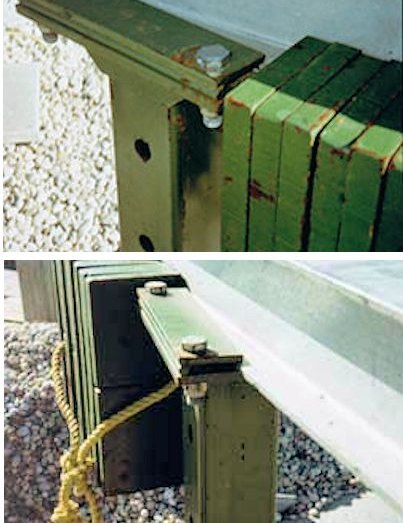Anchorage Counterweights
Safety factors for the counterweights, riggings, and direct connections to roofs, floors, and suspension ropes of adjustable suspension scaffolds should be based on the rated load and the stall load of the hoist, not the maximum intended load.
The inboard ends of suspension scaffold outrigger beams must be stabilized by:
- bolts or other direct connections to the floor or roof deck; or
- counterweights.
Exception. Masons' multi-point adjustable suspension scaffold outrigger beams must not be stabilized by counterweights.
Counterweights used to balance adjustable suspension scaffolds are capable of resisting:
- at least 4 times the tipping moment imposed by the scaffold when it is operating at the rated load of the hoist (see counterweight formula to the right); or
- a minimum of 1½ times the tipping moment imposed by the scaffold when it is operating at the stall load of the hoist, whichever is greater.
Also, check for the following:
- Ensure only items specifically designed as counterweights are used to counterweight scaffold systems. Masonry units, rolls of roofing felt, and similar construction materials may not be used as counterweights.
- Ensure counterweights are not made of flowable materials such as sand, gravel, and similar materials that can be easily dislocated. An acceptable non-flowable material for use would be a counterweight made of cast iron.
- Make sure counterweights are secured by mechanical means to the outrigger beams to prevent accidental displacement.
- Counterweights should not be removed from an outrigger beam until the scaffold is disassembled.
Knowledge Check Choose the best answer for the question.
5-4. Counterweights used to balance adjustable suspension scaffolds are capable of resisting _____ imposed by the scaffold when it is operating at the rated load of the hoist.
You forgot to answer the question!


